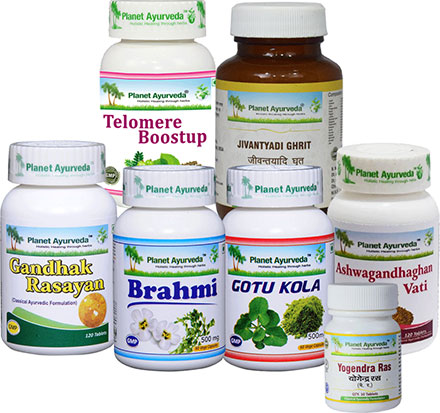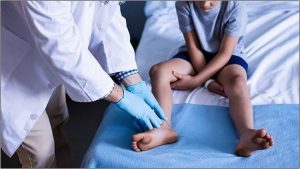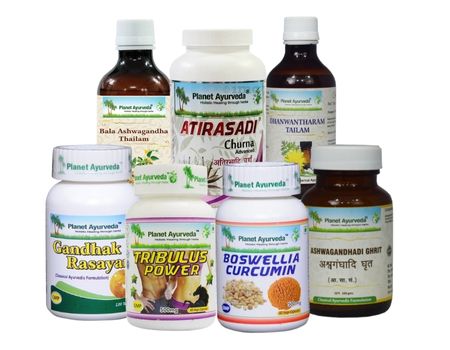Partial Empty Sella Syndrome Treatment In Ayurveda
Abstract
The pituitary gland is a gland at the base of the brain and produces substances that affect the growth and hormonal levels in the body. The prevalence of Partial Empty Sella Syndrome is 10 to 30%. Females are more prone to this disease than males and mostly middle-aged females. The causes, symptoms, and ayurvedic management of Partial Empty Sella Syndrome are described in detail in this article.

Introduction
Partial Empty Sella Syndrome is a condition in which the pituitary gland shrinks or becomes flattened. The pituitary gland rests in sella turcica, in the skull, and looks like a saddle compartment.
Partial Empty Sella Syndrome is of two types
- Primary Partial Empty Sella Syndrome- occurs due to birth defects.
- Secondary Partial Empty Sella Syndrome- present due to some disease in the pituitary gland.
Though it is not a life-threatening condition, some people do not experience any symptoms and do not need any treatment if the pituitary gland is not enlarged.
Ayurvedic Aspect
We can consider Partial Empty Sella Syndrome as a Vataj disorder. Excess aggravation of Vataj dosha in the brain could lead to certain serious disorders by hindering normal functioning and hormonal imbalances in the body. Since all reproductive functions related hormones are released directly and indirectly through the pituitary gland. Vata Dosha suppresses the activity of the pituitary gland. This can be recovered by balancing the body doshas with ayurvedic herbs.
Causes
The cause for primary Partial Empty Sella Syndrome and secondary Partial Empty Sella Syndrome differs. Whereas, more commonly the exact cause for both is still not known.
- Primary Partial Empty Sella Syndrome occurs due to some birth defects in the sella diaphragm.
Secondary Partial Empty Sella Syndrome occurs due to-
- Brain trauma
- Pituitary tumors
- Surgery of the pituitary gland
- Due to other associated disorders
Symptoms
The symptoms of Partial Empty Sella Syndrome may include
- Impotence
- Infertility
- Less sexual desire
- Irregular menstrual periods
- Inflamed eyes
- Blurred vision
- Spinal fluid coming out of the nose
- The pressure inside the skull at its base
Diagnosis
Diagnostic tests are done to confirm the diagnosis are
- MRI scan
- CT scan
Treatment
There is no specific treatment for Partial Empty Sella Syndrome and in most cases, treatment is not needed until abnormal symptoms are produced-
- Symptomatic treatment is indicated
- Analgesics
- Hormonal replacement therapy for balancing hormones
- Surgery to prevent Cerebrospinal fluid leakage from the nose
Herbal remedies for Partial empty sella syndrome by Planet Ayurveda
Ayurveda offers ayurvedic medicines to manage the condition of the patient with Partial Empty Sella Syndrome. Planet Ayurveda is a famous and trustworthy herbal manufacturing company in India. Their products are purely manufactured from standardized extracts of various natural herbs. Moreover, the company is internationally certified and people worldwide are using their medicines. Medicines are prepared on the guidelines laid by the Indian government. Planet Ayurveda provides the following listed medicines for the management of Partial Empty Sella Syndrome –
Product List
1. Brahmi Capsules
2. Gotukola Capsules
3. Ashwagandha Ghan Vati
4. Telomere Boost Up
5. Yogendra Ras
6. Jeevantiyadi Ghrit
7. Gandhak Rasayan
Products Description
1. Brahmi Capsules
These capsules are prepared from Brahmi (Bacopa monnieri), which is a well-known herb for controlling brain functions. It also reduces the chances of brain and brain cell damage by strengthening them. Brahmi can do wonders more than you know. It reduces stress and anxiety and helps ease many abnormal symptoms.
Dosage Take 1 capsule twice daily
2. Gotukola Capsules
These fabulous capsules are prepared from Gotukola (Centella asiatica) which has the ability to increase brain memory. It also increases blood circulation to the brain and thus to the pituitary gland. It will help to reduce swelling and reduce symptoms of the defective pituitary gland.
Dosage Take 1 capsule twice daily
3. Ashwagandha Ghan Vati
These tablets are prepared from herbs such as Ashwagandha (Withania somnifera) which has rejuvenating properties. Also, it does wonders for the brain and nerves. It will boost the person physically and mentally which will help overcome the abnormal symptoms of Partial Empty Sella Syndrome.
Dosage Take 2 tablets twice daily
4. Telomere Boost Up
This patent formulation of Planet Ayurveda consists of Amla (Emblica officinalis), Giloy (Tinospora cordifolia), etc. These capsules are basically used to balance the tridosha and excrete the Aam dosha from the body. It will boost the body’s functioning and fertility by balancing the hormonal levels in the body of the patient. Being a rasayan and vajikaran will do wonders for your whole body. Of course, it wonderfully works in Partial Empty Sella Syndrome.
Dosage Take 1 capsule twice daily.
5. Yogendra Ras
This ayurvedic formulation is prepared with Parad (purifies mercury), Swarna Bhasma (Gold calx), Vanga bhasma (Tin calx), etc. This ras formulation contains herbs and minerals combined in a tablet form and pacifies Vata and pitta dosha in the body. It is used for treating various neuromuscular disorders and works wonders when given with other combination medicines. This medicine must be taken under the guidance of the doctor.
Dosage Chew 1 tablet once daily
6. Jeevantiyadi Ghrit
This ghrit consists of Jivanti (Leptadenia reticulata), Yashtimadhu (Glycyrrhiza glabra), Shatavari (Asparagus racemosus), etc. This medicate ghrit is very efficiently used in eye disorders. It facilitates normal functioning and vision of the eyes. It also recovers the early stages of various diseases and is to be used under medical supervision.
Dosage Have 1 teaspoon twice daily
7. Gandhak Rasayan
This rasayan preparation contains Gandhak (Purified sulfur) and is used for various purposes such as immunity enhancing, fertility booster, and enhancing body strength, stamina, and potency. It also purifies the blood by eliminating the blood impurities and treating the pain. These tablets have antibacterial, antimicrobial, antipruritic, antioxidant, analgesic, anti-inflammatory, and adaptogenic properties. Thus it eases the various abnormal symptoms of Partial Empty Sella Syndrome.
Dosage Take 2 tablets twice daily.
CONTACT PLANET AYURVEDA TO PROVIDE YOU THE COSTING / ORDERING AND DELIVERY INFORMATION AT – COSTING.PLANETAYURVEDA@GMAIL.COM OR CALL AT +91-172-5214040
Conclusion
Ayurveda is one of the oldest and most natural healing systems in India. Ayurveda medicines differ from allopathic medicine in treating such syndromes. Ayurvedic natural and pure herbs restore the imbalance of hormones in the body due to the abnormalities in Pituitary Gland. Normalization of hormones increases the chances of living a quality life. For proper ayurvedic management under the guidance of an ayurvedic doctor, with diet and lifestyle modifications and to manage your symptoms safely without any side effects with natural treatment visit us at www.PlanetAyurveda.com




